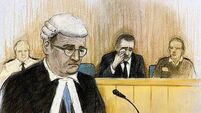Aidan Turner is hitting the big time

SITTINGdown with actor Aidan Turner is a slightly uncanny experience. I’ve come to our interview from a screening of the final instalment of Peter Jackson’s Hobbit trilogy, The Battle of the Five Armies, in which the 31-year-old Dubliner plays orc-slaying dwarf Kili.
In the film, he has long hair and a prosthetic nose and wields an exceedingly pointy sword. So it’s a shock to encounter him in a dapper black suit, a guitar perched on his lap (the hotel where we meet is so agonisingly trendy the rooms are furnished with musical instruments). The look is more Urban Outfitters than Mines of Moria.











